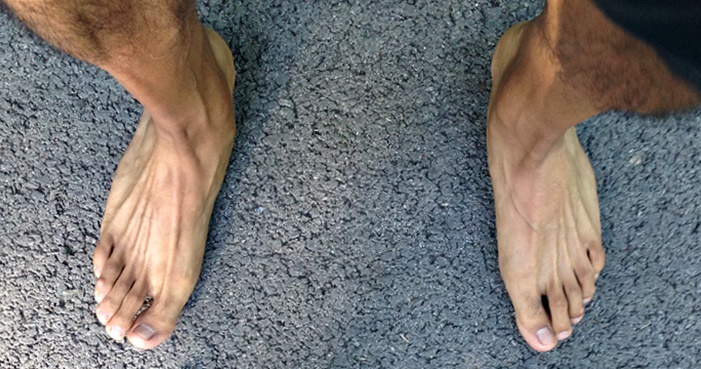
- #Stress fracture in foot symptoms how to#
- #Stress fracture in foot symptoms full#
- #Stress fracture in foot symptoms professional#
#Stress fracture in foot symptoms professional#
In short, it's best to work with a licensed professional and decide what methods are best for you and your needs and goals. To be clear, ice isn't bad and may help with pain relief, but it can make the healing process "stagnant" and doesn't help with inflammation, Graham Brady said. "Blood flow helps flush out inflammation and brings fresh blood to the area to aid with healing and that will actually help flush things through so that you will heal quicker versus ice", he said. For example, Panchal recommended icing before and after exercise to help decrease inflammation, while Graham Brady suggested opting for heating over icing, as it can improve blood flow throughout the affected area. Trainers have differing views on whether heat or ice is the best way to ease symptoms associated with shin splints. She also recommended compression therapy, such as wearing compression socks or using a compression device, such as compression boots. Graham Brady recommended foam rolling your anterior tibialis (the muscle along the shin) before and after training as well as your calves and lower leg to increase blood flow and to move tissue around to loosen up whatever may be tight and overworked in the lower leg. Reminder: there's minimal reward for doing intense workouts all the time.
:max_bytes(150000):strip_icc()/x-ray-image-of-bone-fracture-at-5th-metatarsal-left-foot-945203958-ca2c136b313e4456b7f36e7058938d1b.jpg)
One of the easiest ways to treat and prevent shin splints is to get adequate rest and properly warm up and cool down before and after exercise. Shin splints can be uncomfortable and annoying, especially when you've been posting great workouts. "If the bone and muscle has not successfully adapted to the continuously increased stresses being placed on them, they may begin to get inflamed, causing shin splints, or more severe damage may be caused, leading to a stress fracture", Panchal said. Stressing your bones and muscles is necessary to get stronger and improve your overall performance, but there's one major caveat.
#Stress fracture in foot symptoms full#
"When your hips stop working as well as they should, other muscles start to take over", she said, adding that if muscles aren't working properly and you aren't able to achieve full hip extension, the muscles in the lower leg will take over and "whatever's hitting the ground will start to work harder because what's happening up top is not working as hard or as well as it should".
#Stress fracture in foot symptoms how to#
(Don't miss How To Increase Your Running Mileage Without Getting Injured, According to Experts!)Īnother less common (and often ignored) culprit behind shin splints are tight hips, Graham Brady said. Worn-out footwear (typically when you hit the 300- to 500-mile mark) that no longer provides support and increasing your training load too soon can also lead to shin splints, Graham Brady said, due to the lack of strength and support that can overtax certain muscles as a result. Shin splints can also occur when you've changed your training programme, for example, adding more sprints or hill work into your routine. The cause of shin splints isn't exact, according to Panchal, but "many clinicians state that they are caused by over-usage without adequate rest periods to allow the muscle-bone relationship to strengthen". You'll also more than likely to feel a burning sensation and tenderness along the muscle and shin, Graham Brady said. More often than not, people experience shin splints on the medial side of the leg (the part of the shin that faces the other leg), Panchal said.

Overuse of the muscles that attach to the front of the shin, abnormal loading in the lower leg due to your hip position and improper running form can cause the muscle to micro-tear away and if the muscle begins to tear away from the bone, it will lead to shin splints, said Graham Brady.

"Shin splints happen when the muscles that are along the shin bone start to micro-tear at the bone a little bit", said Carly Graham Brady, DPT, running coach and owner of On Track Physical Therapy and Performance in Rochester, NY. The pain is usually brought on by exertion, he said. "Shin splints are considered to be pain and discomfort experienced in the legs from constant and repetitive running or activities that involve a lot of running", said Neil Panchal, MS, ACSM-CPT and an exercise physiologist at the University of California San Francisco Human Performance Center. But pain, especially in your shins, shouldn't be ignored. Whether you've been running for years or are just getting started, you probably know that achy muscles and joints are inevitable.


 0 kommentar(er)
0 kommentar(er)
